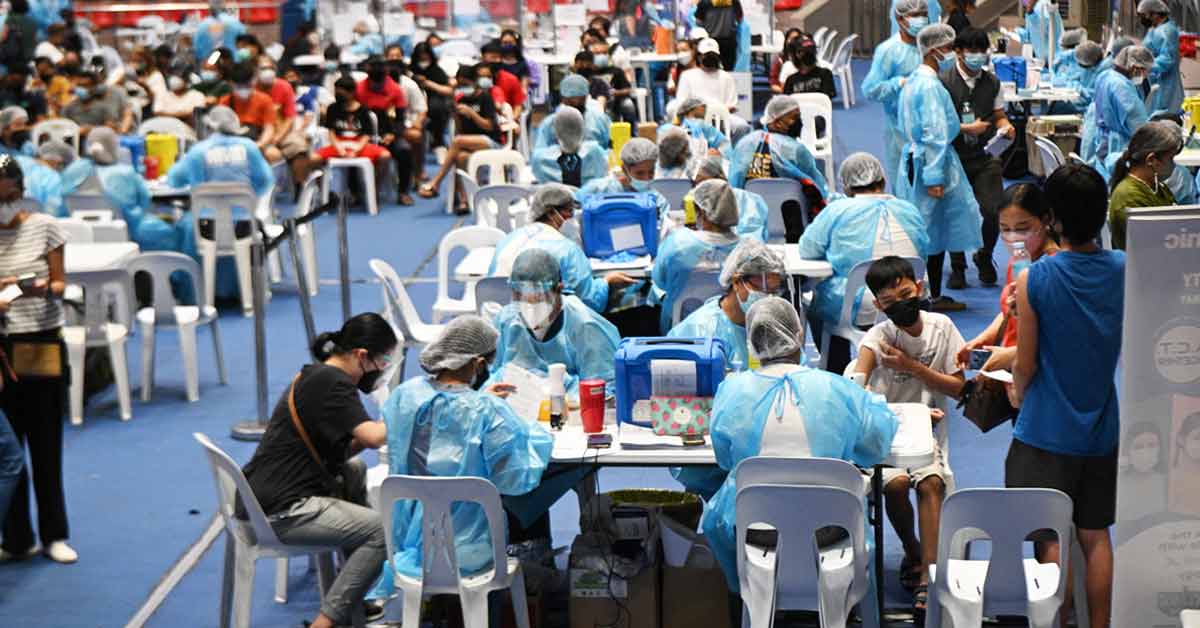I am an epidemiologist working in global health and have worked in the field of vaccines for nearly 15 years. While the scientific successes of SARS-CoV-2 vaccine development have been surreal, the inequity of the pandemic and access to vaccines has left me despondent.
As Australia reaches almost 90 percent coverage for two doses of COVID-19 vaccination, it’s a success story worth celebrating.
COVID-19 vaccination has already proved to be highly effective at dampening wide-scale community transmission in settings such as New South Wales, where a rapid rollout with high levels of first-dose coverage along with other public health measures helped with the bending of the curve.
But the vast majority of low- and middle-income countries have only vaccinated a small proportion of their population. An analysis suggests that while 66 percent of people in high-income countries are fully vaccinated, only 2.5 percent of the population in low-income countries are fully protected.
In many settings, even healthcare workers have not yet been vaccinated, making countries’ frontline defence very weak. With more than 3.5 billion people in the world waiting for their first dose of the vaccine, many high-income countries are now introducing boosters or third doses for the entire population, along with paediatric vaccines.
The barriers to vaccinating people in low-income countries are largely due to supply issues, with only a small number of doses available to them. While there are other ongoing challenges such as cold chain low-temperature storage, distribution logistics, vaccine hesitancy and shortages of health workers to administer the vaccines in some settings, the largest barrier relates to dose shortage.
The world is hearing of the emergence of a new variant of concern, Omicron. While first detected in Gauteng, South Africa, the variant did not necessarily begin there. While it is still early days, the World Health Organization Technical Advisory Group on SARS-CoV-2 Virus Evolution has raised alarms for several reasons.
Early epidemiological data from cases in Gauteng - one of the most populated regions of South Africa, where the strain appears to be spreading faster than other parts of the country - suggests that Omicron has a new combination of multiple mutations, including on the “S gene”, which produces the spike protein, and an apparent ability to outgrow the Delta variant.
Science tells us we could have avoided the emergence of this new variant of concern. Viral mutations are a part of natural selection and are common. When the virus enters a cell, it can make copies of itself that go off and infect other cells and then pass to another person.
Sometimes during this process of copying in non-immune persons, it may introduce an “error” or mutation, and at times these mutations can offer a competitive advantage to the viruses to spread from one non-immune person to another.
But if a person is already immune (say from vaccination), then the virus cannot spread between people, preventing the emergence of new variants.
The emergence of each new variant of concern can have implications for our public health response measures, how we test for the strain and whether the current vaccines will work. The emergence of new variants that escape existing vaccines can set back COVID-19 vaccination successes significantly around the world.
Although it is too early to say if any of this holds true for Omicron, or if there are any “real” differences in characteristics in terms of its transmission, its ability to cause severe disease and if it will replace the Delta variant of SARS-CoV-2, it is a timely reminder that we need larger populations of the world to be vaccinated against COVID-19.
Vaccination is one of the best ways to avoid the emergence of new variants.
For several months, experts in the field have advocated for greater vaccine equity across the world, ensuring that low-income countries have greater access to vaccines through increased supply through COVAX, waivers of intellectual properties that hold the recipe for how vaccines are made, and greater manufacturing capacity in low- and middle-income countries.
Vaccinating the world’s population, especially those living in conditions of poverty who experience the worst impact of COVID-19 at the same pace as those in rich countries, is important for several reasons.
Firstly, it is more equitable and the ethical thing to do; secondly, economic estimates from the United Nations estimates suggest that low- and middle-income countries will suffer losses of US$12 trillion through to 2025; and thirdly, the scientific case for vaccinating the world is robust.
As we prepare to enter the third year of the pandemic, there is also a significant impact on other health programs around the world, particularly in low- and middle-income countries, relating to measles, TB, HIV and several other routine health services, which can further cause greater severe impact on people living in poverty.
As countries embark on the booster, adolescent and paediatric vaccination programs we need faster policy-level solutions that increase vaccine supplies in low- and middle-income countries.
The current approaches are not optimal.
The views expressed in this article are the author’s own and do not necessarily reflect those of The ASEAN Post.
